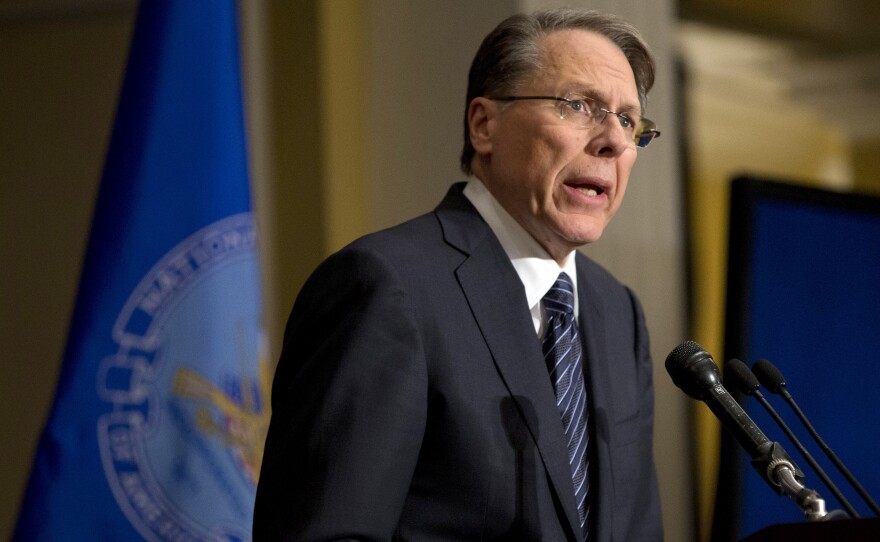The nation's largest gun owners group had said little in the immediate aftermath of the shootings at Sandy Hook Elementary School in Newtown, Conn. But the National Rifle Association's executive vice president, Wayne LaPierre, broke that silence Friday with a call to place armed guards at all of the nation's schools.
The idea was met with immediate criticism from Democrats in Congress.
At a Washington event billed as a news conference -- although reporters were denied the opportunity to ask questions -- LaPierre expressed the group's horror, outrage and grief at the shootings. Then he said the only way to stop "a monster from killing our kids" was with what he called a plan of absolute protection.
"The only thing that stops a bad guy with a gun is a good guy with a gun," he said. "Would you rather have your 911 call bring a good guy with a gun from a mile away or from a minute away?"
The NRA chief's statement was interrupted twice by protesters -- including one who said the NRA had blood on its hands.
In response to LaPierre, California Sen. Dianne Feinstein noted that about a third of the nation's schools already have armed guards.
"Is this the answer? That America should become an armed camp?" said Feinstein, who is sponsoring legislation to reinstate a ban on assault weapons. "I don't think so, and I don't think that's the American dream."
Democratic Sen.-elect Christopher Murphy of Connecticut, whose current congressional district encompasses Newtown, called LaPierre's comments tone-deaf.
Sen. Richard Blumenthal, D-Conn., said if the NRA wants to be part of the national conversation about gun violence, it's not doing itself any favors. "The NRA today in its approach will be irrelevant," he said, "because it can't be a credible and constructive participant in this debate if it says the only acceptable solution is armed guards in schools."
Money And Influence
The NRA has long been known as one of Washington's most powerful lobbies. It has been a prolific contributor to political candidates and has waged public campaigns against renewal of the assault weapons ban.
It has also been active in limiting the reach of the Bureau of Alcohol, Tobacco, Firearms and Explosives, which enforces federal gun laws. The NRA was behind efforts to limit access to a database used to trace weapons.
William Vizzard, a former ATF agent, says the NRA is worried the government wants a national gun registry. "A lot of those folks are very paranoid about what they consider registration," he said. "But to a large extent, it was an attempt to undercut the ability of the press and other entities to write stories about this and various local municipal jurisdictions filing suit and so on."
The ATF has been without a permanent administrator since the Bush administration, in part because of NRA opposition. It has also been able to keep funding for the agency flat.
But Vizzard, who teaches criminal justice at Sacramento State, says it's not so much the number of agents as it is the restraints they're under. "ATF could have 10,000 agents. It doesn't essentially mean they'd be able to produce a lot better results because they don't have the statutory authority," he said. "They even restricted the number of times they can inspect a dealer per year."
This week, some lawmakers whom the NRA had previously given "A" grades have expressed an interest in broaching gun issues for the first time. How far they will get is unclear, but their willingness suggests the NRA's aura of invincibility may be showing some cracks.
Copyright 2012 National Public Radio. To see more, visit www.npr.org.






